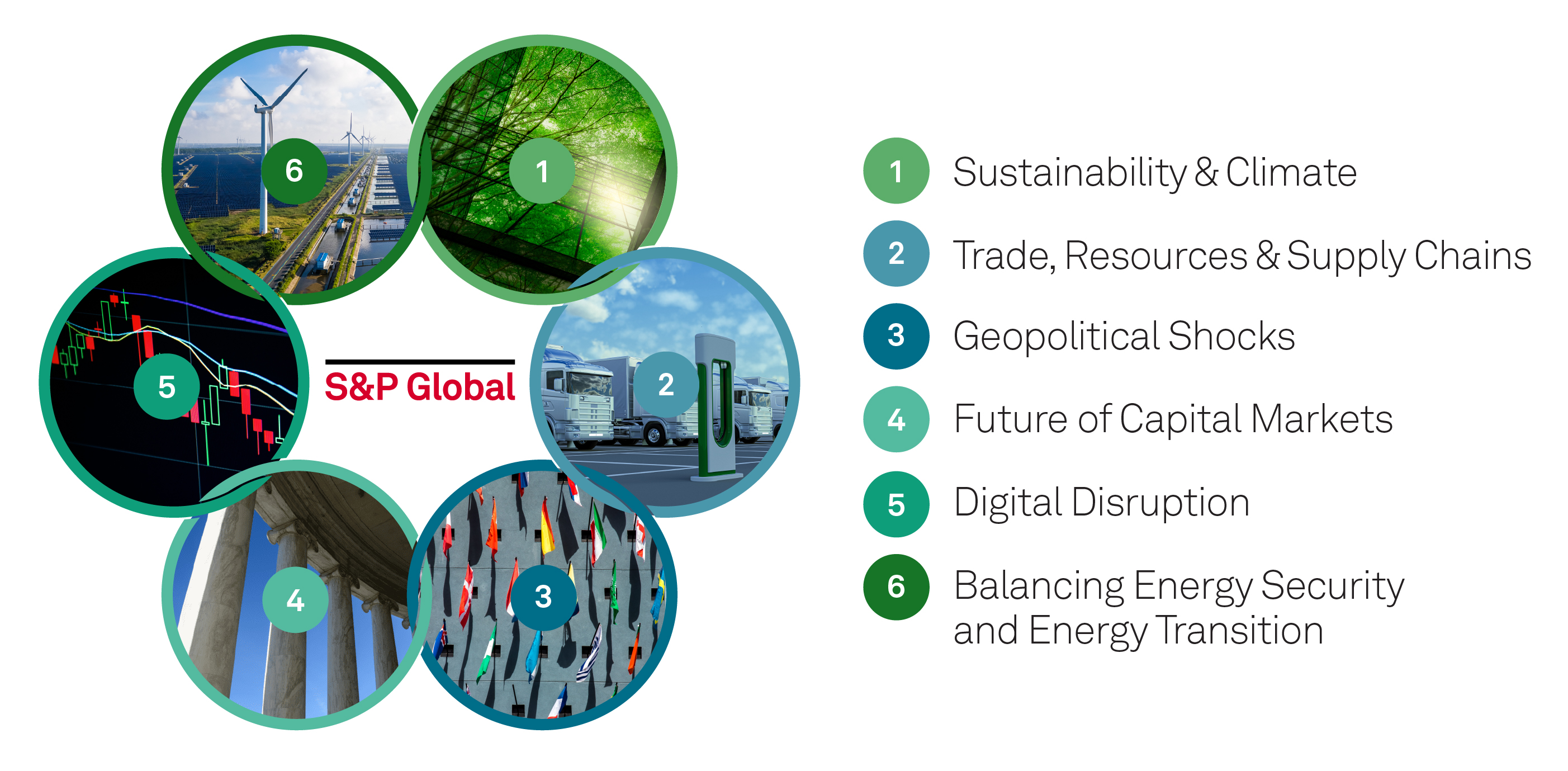Discover more about S&P Global’s offerings
Published: January 10, 2024
In this journal:
Global debt 2030: Can the world afford a multifaceted transition?
End of the Washington Consensus
Investment in climate adaption needs have high returns on growth
The multidimensional path to net-zero
The journey to further EV adoption
The challenge of aging: Fast and slow
Can generative AI create a productivity boom?
A
s we look ahead to 2030, the world faces unprecedented, accelerated and multifaceted transitions. With global debt potentially reaching $336 trillion, i.e., over 238% of the world’s baseline GDP, how can we afford to confront the global challenges of climate, the energy transition and an aging population, and who has the capacity to pay?
Significant investments are necessary to curb global emissions and limit temperature increases to well below 2 degrees C above the preindustrial age. A radical transformation is needed to reduce the economy’s carbon footprint through decarbonization of industrial processes, transition to renewable energy, electrification of transportation and changes to consumption habits. The cost of inaction could also be substantial. A slow transition could put a significant part of the global population and up to 12% of GDP in certain parts of the world at risk by 2050. Markets do not fully reflect the cost of this transition in asset prices.
The economy and workforce will be shaped by an aging population across developed and developing economies, increasing fiscal pressure on governments to support rising pension and healthcare costs. The digital revolution, further accelerated by the arrival of generative AI, could offer a silver lining by increasing productivity, and new technologies could enable more efficient use of the world’s precious resources.
The investments necessary to support these transitions could add another 10% to global debt at a time when structurally higher interest rates will make the bill bigger, and unaffordable in certain parts of the world. Governments will bear the biggest share of the debt burden, and policymakers will have to make trade-offs in balancing the needs of current and future generations. Corporates and investors must start accounting for the costs of these necessary transformations.
Given the global nature of climate challenges and their disproportionate impact on developing and frontier countries, more global collaboration is vital. Innovative solutions to combine public and private capital will be necessary to fund the required infrastructure investments in less creditworthy economies. The increased geopolitical fragmentation and the rising divide between the Global North and the Global South will require a reinvention of the global order following the end of the Washington Consensus.
The COVID-19 pandemic has shown how extraordinary circumstances can accelerate progress in technology development, international collaboration and changes in working habits. Despite all its challenges, this transition could create new opportunities to drive technological innovation across all sectors of the economy, supporting the construction of new, clean infrastructure and a more efficient and sustainable use of the world’s natural capital, defining the future of work, fostering innovative financing models to support private and public investments, and shaping new forms of international collaboration.
This edition of S&P Global’s Look Forward Journal delves into solutions to accelerate global progress while discussing the issues of debt, energy transition and global fragmentation. The next edition, to be published in early 2024, will be dedicated to supply chains. We strive to look beyond the immediate and separate the signals from the noise that is pervasive in today’s global discourse.
The S&P Global Research Council includes senior leaders from all our divisions and Sustainable1 who work together to connect our content and expertise across the company to develop actionable insights for markets and establish S&P Global as the premier research leader on key strategic themes.
Council Members have identified the trends and themes that present opportunities and challenges for the company and our customers. The 2024 Key Themes are:

Next Article:
Global debt 2030: Can the world afford a multifaceted transition?
This article was authored by a cross-section of representatives from S&P Global and in certain circumstances external guest authors. The views expressed are those of the authors and do not necessarily reflect the views or positions of any entities they represent and are not necessarily reflected in the products and services those entities offer. This research is a publication of S&P Global and does not comment on current or future credit ratings or credit rating methodologies.